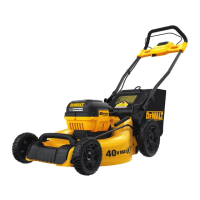
Do you have a question about the DeWalt DCMW290 and is the answer not in the manual?
| Brand | DeWalt |
|---|---|
| Model | DCMW290 |
| Category | Lawn Mower |
| Language | English |
Instructions for operating the mower safely and correctly.
Guidelines for safe mowing on inclines to prevent accidents.
Precautions to ensure children's safety around the mower.
Covers environmental hazards, rain use, child safety, dress code, and eye protection.
Emphasizes checking for damaged parts and using authorized service centers.
Warns against wet locations, forcing the mower, and overreaching.
Stresses the importance of awareness and common sense during operation.
Keep cutting edges sharp and guards in place and working order for performance and safety.
Steps to follow after the mower strikes an object to ensure safety and check for damage.
Use only identical replacement blades for safety and performance.
Warning regarding hazardous chemicals in dust and recommended protective gear.
Essential safety guidelines for battery packs and chargers to prevent injury.
Explanation of the fuel gauge indicator lights on battery packs.
Information about the RBRC recycling program for batteries.
Warning against exposing the charger to rain or snow.
Guidelines for disconnecting chargers and managing cords to prevent damage.
Caution regarding the use of extension cords for chargers and outdoor operation.
Importance of using the correct wire gauge for extension cords for safety.
Instructions for proper charger placement, cleaning, and avoiding damage.
Compliance statements for radio frequency energy and interference.
Steps to take if the equipment causes radio or television interference.
Step-by-step instructions for inserting the battery pack into the charger.
Explanation of the indicator lights for charging status.
How the charger handles battery packs outside optimal temperature ranges.
Recommended air temperature range for charging batteries.
Normal condition of charger and battery pack warming during use.
Steps to take if the battery pack does not charge properly.
Advice on recharging batteries without adverse effects on their life.
Warning to keep conductive materials away from charger cavities.
Prohibition of freezing or immersing the charger in liquid.
Recommendation for storing the mower in a cool, dry place.
Advice for storing a fully charged battery pack for extended periods.
Instructions for adjusting the handle height for comfortable operation.
Procedure for attaching the grass collection bag to the mower.
Instructions for installing the grass mulching insert.
Step-by-step guide for installing and removing the battery pack.
How to adjust the cutting height using the cut height adjustment lever.
Procedure for inserting the safety key to enable operation.
Steps to start the mower by using the switch box and bail handle.
Instructions for folding the mower handles for storage.
Securing the folded handles in place for convenient storage.
Importance of inspecting the mowing area and removing debris.
Safety advice for mowing on slopes, including caution and footing.
Adjusting mower height for rough ground and managing grass catcher clogging.
Actions for abnormal vibration and cleaning the mower after use.
Advice on keeping the blade sharp and balanced for optimal performance.
Detailed instructions for removing and installing the mower blade.
Importance of a sharp blade for performance and frequency of sharpening.
Ensuring the blade remains balanced after sharpening for safe operation.
Step-by-step instructions for sharpening the blade using a vise.
Clean air vents with dry air and non-metallic parts with mild soap and water.
Clean grass clippings from the underside of the deck and check fasteners.
Statement of compliance with CPSC safety standards.
Warning about using non-DEWALT accessories and recommended items.
Details on defects covered, exclusions, and limitations of the warranty.
Information on free service periods and the 90-day money-back guarantee.
Warranty information specific to products sold in Latin America.
How to obtain free replacement warning labels if they become illegible.
Solutions for the mower not starting when the bail handle is engaged.
Troubleshooting steps when the motor stops unexpectedly during operation.
Solutions for poor cutting performance or incomplete lawn cutting.
Reasons and fixes for the mower being difficult to push.
Diagnosing and resolving issues causing abnormal noise and vibration.
Troubleshooting steps for the mower not collecting clippings effectively.
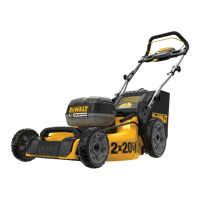
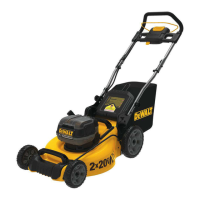
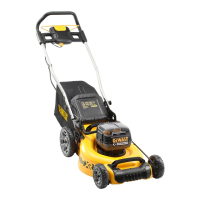
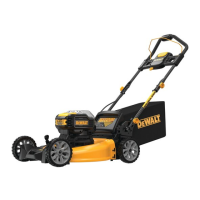
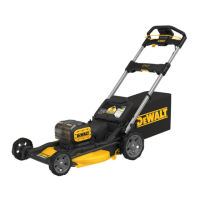

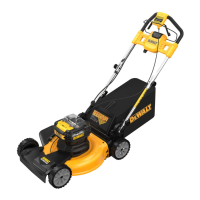





